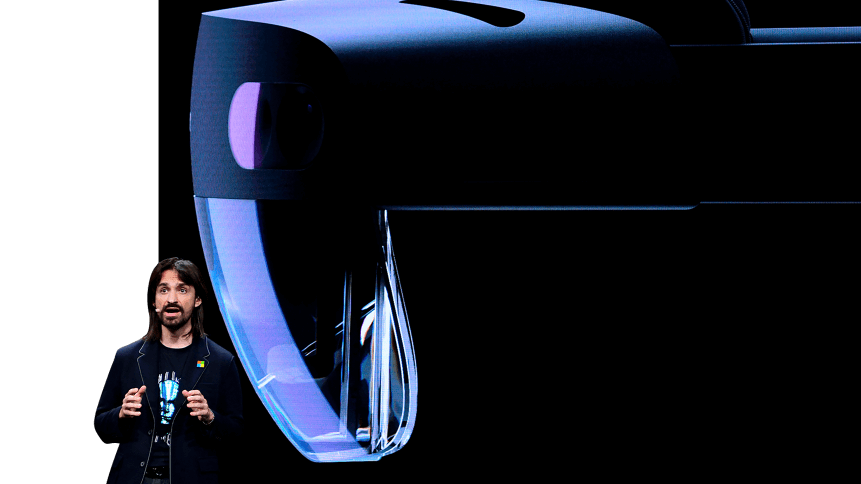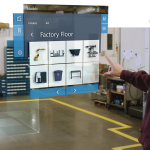Microsoft wants you to get to work with AR

Last week, Microsoft unveiled a new mixed reality platform, giving enterprise customers across industries the tools to create their own applications— whether to plan the placement of machinery on a factory floor or help a customer imagine the look of a newly-customized car.
At MWC 2019 this week, it launched the hardware to go along with it; a new iteration of its HoloLens headset, which has already been used in instances such as construction, hospitals and even classrooms since its launch in 2016.
The HoloLens 2 will boast two times the field of view of its predecessor while maintaining the 47 pixels per degree of sight. Geared at enterprise users and with a US$3,500 price tag, the firm’s hope is that it will change “the way work gets done”.
“Immersion, or persuading the wearer that they really are part of the scene they see in front of them, is important,” Forrester’s Paul Miller told the BBC.
“The relatively narrow field-of-view for the first-generation HoloLens made it difficult for wearers to suspend disbelief and accept that they were immersed in the environment before their eyes.
“With HoloLens 2, Microsoft has worked hard to improve both the resolution of the display and its field-of-view, resulting in a more immersive and believable experience,” Miller said.
Key upgrades include eye-tracking, which will make interacting with holograms more natural, while multiple users can login instantly and interchangeably with Windows Hello enterprise-grade authentication with iris recognition.
The headset also incorporates a time-of-flight depth sensor, combined with built-in artificial intelligence (AI) and semantic understanding that enables the direct manipulation of holograms— a worker could swipe between pages of an instruction manual, for example.
Final ergonomic tweaks include increased comfort as a result of a carbon-fiber build and improved thermal management, while the main visor can flip up if the user wants to briefly switch back to reality.
Launching the HoloLens 2, Microsoft emphasized its focus on an enterprise customer base, explaining how the device would provide “immediate” value to large businesses.
That’s not just talk though, the company is already working with industry partners including Airbus, Honeywell, Pearson and Saab.
Some of the biggest potential for the hardware is in interactive remote working or supervision; an engineer wearing a headset can feed back their field of vision to a technical advisor, who would be able to draw or scribble virtual notes and instructions into their engineer’s surroundings using Microsoft’s Dynamics 365 Remote Assist program.
At MWC, meanwhile, Microsoft demonstrated “collaborative computing” via the workplace application Spatial, with multiple users able to interact with a virtual whiteboard and share ideas.
With flexible use cases in mind— whether on the factory floor, classroom, showroom or boardroom— Microsoft is also looking to partner with companies to create customized versions of the HoloLens.
YOU MIGHT LIKE

Kellogg pilots VR eye-tracking in simulated stores
One example is that of a tie-up with Trimble, the owner of 3D modeling package SketchUp, which has modified the headset to be worn like a hardhat for use on construction sites or other hazardous environments.
Called the Trimble XR10, this will launch to market alongside the HoloLens 2 later in the year.
Software giant Microsoft has certainly put the tools in the place for enterprises to enter the next generation of mixed reality-driven work if they choose to embrace it. However, real traction relies in enough investment in developing the apps needed for their specific use cases.
Other factors potentially hindering adoption include security and durability, while connectivity— its ability to work effectively on a range of wifi signals— will also be crucial.
Alongside the HoloLens 2, Microsoft also announced the launch of a new version of its Kinect depth-sensing camera.
Previously designed for gaming on its Xbox console, the new 4K resolution edition is targeted for non-gaming uses, including detecting when patients have fallen out of a hospital bed or detecting problems on a factory assembly line.









